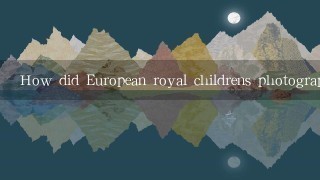How did European royal childrens photography differ from other forms of portraiture in Europe?

Sure, here's a breakdown of how European royal children's photography differed from other forms of portraiture in Europe:
1. Artistic Style:
- Royal portraits were characterized by a high degree of realism and naturalism.
- The focus was on capturing the child's likeness and personality, rather than emphasizing their social status or accomplishments.
- Artists used a variety of techniques, including oil painting, pastel, and photography, to create lifelike images.
2. Historical Context:
- Royal portraits were often commissioned by the king or queen to commemorate their child's birth, christening, or other milestones.
- These portraits served as official records of the child's lineage and accomplishments.
- They were also used for religious and social purposes, demonstrating the child's status and acceptance into the community.
3. Technical Skills:
- Royal portraiture was highly technical and demanded the skills of skilled artists.
- Artists had to be proficient in painting, drawing, and photography, as well as in light and composition.
- They used specialized equipment, such as oil paints, mirrors, and cameras, to create the desired effects.
4. Subjects and Themes:
- Royal portraits typically depicted the child in natural settings or in a formal pose.
- The focus was on capturing their physical appearance, expression, and personality.
- Portraits often included religious or mythological motifs, reflecting the child's status and lineage.
5. Influence on Portraiture:
- Royal portraits had a profound influence on European portraiture.
- They established the standard for realistic and natural portraiture, which became the norm for future generations.
- They also inspired artists to explore new techniques and approaches to capturing the human form.
























































